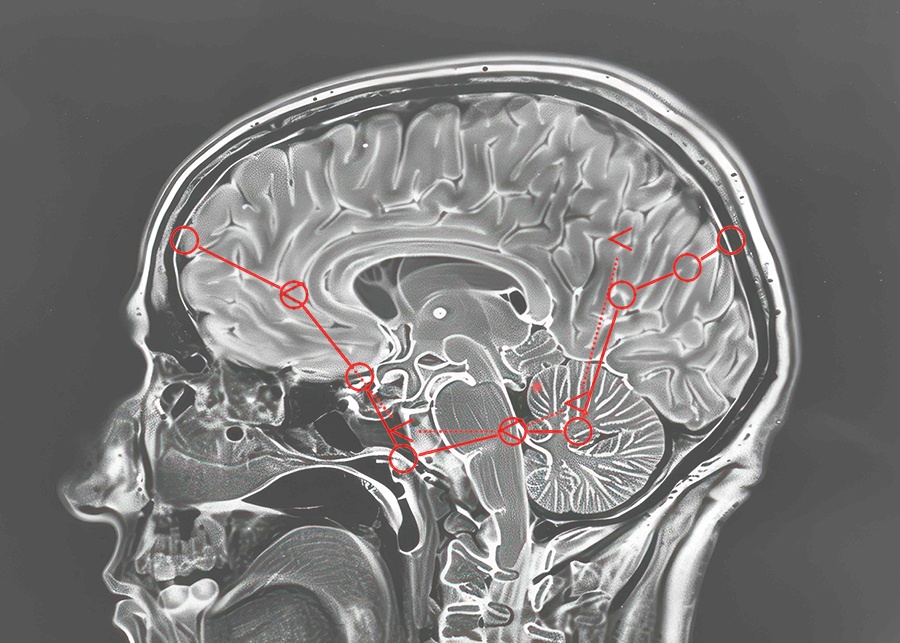Surgeons and basic scientists in the Department of Otolaryngology at WashU Medicine have teamed up to demonstrate a novel connection between hearing and dementia.
Recently published in the Journal of Otolaryngology – Head and Neck Surgery, their study of patients undergoing cochlear implantation revealed the presence of certain proteins commonly associated with Alzheimer’s disease (AD) dementia. These protein analytes, known as beta amyloid (Aβ40 and Aβ42) and tau, were found in samples of perilymph, a fluid localized to the inner ear.

Perilymph is responsible for transmitting sound wave energy from the middle ear to the sensory epithelium of the cochlea where it can stimulate sensory hair cells to provide the detection of sound. Because this fluid has a relatively slow turnover, its composition may offer an accurate reflection of the health of cells and tissues within the inner ear.
In their study, perilymph samples were taken from 25 patients undergoing cochlear implantation. Patients also underwent cognitive testing using the Montreal Cognitive Assessment or MoCA. Perilymph samples were analyzed for amyloid beta 40 and 42 and total tau, and those levels were correlated with patient age and MoCA scores.
The study was the first to demonstrate the presence of Alzheimer’s-related analytes in the human inner ear. Further, results revealed higher levels of tau protein and lower Aβ42/Aβ40 ratios in subjects with lower MoCA scores, similar to findings in cerebrospinal fluid of AD patients. The presence of these biomarkers of neurodegeneration, suggests a parallel phenomenon in the inner ear – a potential biological link between Alzheimer’s disease and some types of hearing loss.
Alzheimer’s Disease-related Analytes Amyloid-B and Tao in Perilymph: Correlation with Patient Age and Cognitive Score
Amit Walia, Matthew A. Shew, Nedim Durakovic, Jacques Herzog, John Cirrito, Carla M. Yuede, Cameron C. Wick, Melissa Manis, David Holtzman, Craig Buchman, and Mark Rutherford
Unfortunately, perilymph samples are difficult to obtain because the human inner ear or labyrinth is located deep in the temporal bone at the base of the skull. Because cochlear implant electrodes are inserted into this perilymphatic space, these surgical patients provide the only good source of analytic samples.
Back in the lab, investigators led by Mark Rutherford, PhD, ate busy analyzing perilymph from mouse models of Alzheimer’s disease to see if levels of the amyloid and tau analytes can be correlated with hearing loss.
Specific aims of the mouse study are to:
- See if AD mice exhibit changes to inner ear synapses, loss of hair cells or loss of auditory neurons; and
- See if AD mice exhibit abnormalities in hearing function.
Rutherford is intrigued about the potential link between hearing loss and Alzheimer’s disease.
“Knowing how these proteins impact the inner ear may explain the association between Alzheimer’s disease and hearing loss,” he said. “A more complete understanding of the relationship between dementia and hearing loss may lead to novel diagnostic testing for the detection of early-stage AD in humans.”
For additional information on these studies, please contact Mark Rutherford, PhD.
